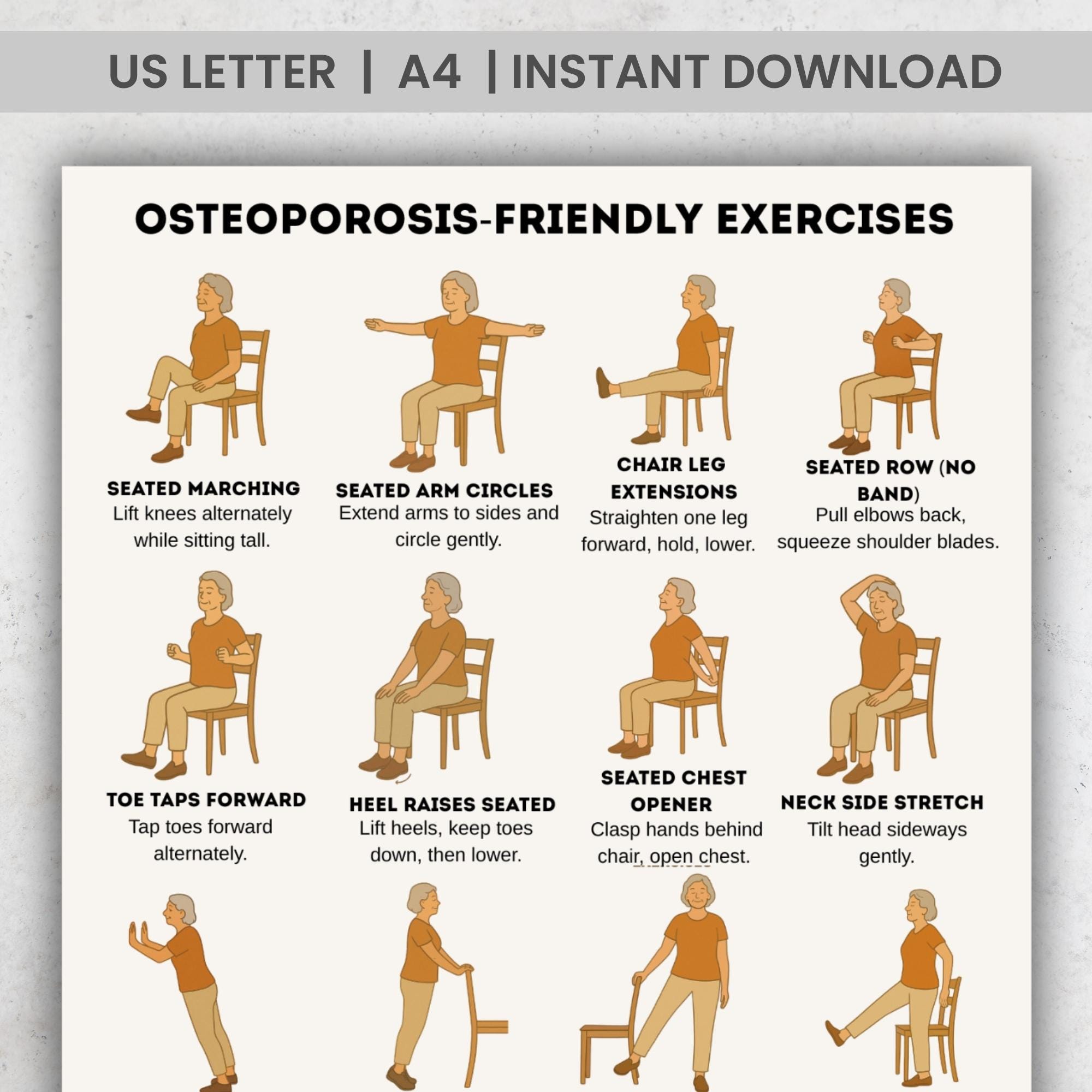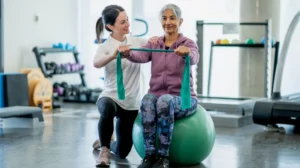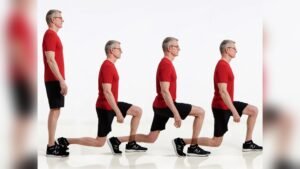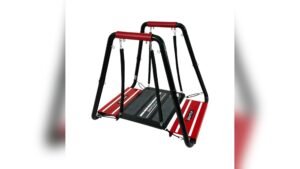Are you worried about keeping your bones strong as you age? Osteoporosis can make your bones fragile and increase the risk of breaks.
But there’s good news—you can take control and strengthen your bones with the right weight exercises. These simple moves are designed just for you, helping to build bone density and improve balance. Keep reading to discover easy, effective exercises that fit into your daily routine and help you stay active and confident.
Your stronger bones start here.

Credit: www.amazon.com
Table of Contents
ToggleBenefits Of Weight Exercises For Bone Health
Weight exercises offer many benefits for bone health, especially for older adults with osteoporosis. These exercises help keep bones strong and reduce the risk of fractures. They also improve muscle strength, balance, and overall mobility. Staying active with weight training can support a healthier and more independent life.
Even small amounts of weight-bearing activities can make a difference. The key is consistency and proper technique. Weight exercises work by applying stress to the bones, which encourages them to stay dense and strong.
How Weight Training Enhances Bone Density
Weight training forces bones to handle more pressure. This pressure signals the body to build new bone tissue. Over time, this can increase bone density. Stronger bones are less likely to break or weaken. Exercises like lifting weights or using resistance bands are very effective. These activities target the hips, spine, and wrists, which are common fracture sites in osteoporosis.
Additional Health Advantages For Seniors
Weight exercises also improve muscle mass and coordination. Better muscles help protect bones during falls. They increase joint flexibility and reduce pain from arthritis. Regular strength training boosts energy levels and mood. It can also lower the risk of heart disease and diabetes. These exercises support better balance, reducing the chance of falls. This combination of benefits helps seniors stay active and independent longer.
Choosing Safe Exercises For Osteoporosis
Choosing safe exercises for osteoporosis is very important for elderly people. Bone health needs careful attention. Exercises must strengthen bones without causing harm. The goal is to build strength gently. Avoid exercises that put too much pressure on fragile bones. Safety should always come first during workouts.
Low-impact Weight Training Options
Low-impact exercises reduce stress on joints and bones. Using light dumbbells helps build muscle safely. Resistance bands offer gentle muscle work without heavy strain. Chair exercises allow support and reduce fall risk. Bodyweight exercises like wall push-ups improve strength steadily. These options keep bones active without harsh movements.
Avoiding High-risk Movements
High-risk movements can cause fractures or injuries. Avoid heavy lifting that strains the spine or hips. Twisting or bending forward deeply puts bones at risk. Jumping or sudden jerky motions may cause falls. Skip exercises that cause pain or discomfort. Choose slow, controlled motions to protect fragile bones.
Effective Weight Exercises For The Elderly
Weight exercises help build stronger bones and muscles. This is very important for elderly people with osteoporosis. These exercises improve balance, reduce falls, and increase bone density. Safe and simple routines can make a big difference in daily life.
Choose exercises that are gentle but effective. Start slowly and increase intensity as strength grows. Consistency is key. Here are some of the best weight exercises for elderly individuals.
Squats And Lunges
Squats and lunges strengthen legs and hips. These exercises improve stability and mobility. Stand with feet shoulder-width apart for squats. Lower your body as if sitting on a chair. Keep your back straight. For lunges, step forward and bend both knees. Return to standing and switch legs. Use a chair for support if needed.
Resistance Band Workouts
Resistance bands are light and easy to use. They add gentle weight to your movements. Try arm curls, leg lifts, and seated rows. Bands come in different strengths. Choose one that challenges you but feels safe. These workouts improve muscle tone and bone health.
Dumbbell Routines
Dumbbells build upper body strength. Start with light weights, like 1 to 3 pounds. Perform bicep curls, shoulder presses, and tricep extensions. Move slowly and control each motion. Rest between sets to avoid strain. Dumbbells help maintain bone density in arms and shoulders.
Bodyweight Exercises
Bodyweight exercises use your own weight as resistance. Try wall push-ups, seated leg raises, and heel raises. These exercises are gentle and require no equipment. They improve muscle strength and balance. Practice regularly to support bone health and reduce fracture risk.

Credit: totalperformancept.com
Creating A Bone-strengthening Workout Plan
Creating a bone-strengthening workout plan is key for elderly people with osteoporosis. The right exercises help build stronger bones and improve balance. This lowers the risk of fractures and keeps the body active.
Planning workouts carefully ensures safety and steady progress. Focus on weight exercises that stimulate bone growth without causing injury. Consistency and gradual increases in intensity work best.
Frequency And Duration Guidelines
Exercise at least two to three times per week. Each session should last about 30 to 45 minutes. This gives bones enough stimulus to strengthen. Avoid overdoing it to prevent strain or injury.
Rest days are important for bone recovery. Aim for at least one day of rest between sessions. This helps muscles heal and bones rebuild. Short, regular workouts beat long, infrequent sessions.
Progressing Safely Over Time
Start with light weights and simple moves. Focus on proper form to avoid injuries. Increase weight or repetitions slowly, about every two weeks. Small steps allow bones to adapt safely.
Listen to your body. Stop if you feel pain or discomfort. Use a chair or wall for support if needed. Safe progression keeps motivation high and reduces risk of falls or fractures.
Precautions And Tips For Safe Training
Weight exercises help strengthen bones and muscles in elderly people with osteoporosis. Safe training is very important to avoid injuries. Following some key precautions makes exercise more effective and less risky.
Proper Form And Technique
Using the right form protects your bones and joints. Poor technique can cause pain or injury. Start with light weights. Practice movements slowly. Ask a trainer to check your posture. Good form improves results and safety.
Listening To Your Body
Pay attention to how your body feels during exercise. Stop if you feel sharp pain or discomfort. Mild muscle soreness is normal, but pain is not. Rest if you feel tired or weak. Gradually increase weight and intensity over time.
Consulting Healthcare Professionals
Talk to your doctor before starting weight exercises. They know your health history and can suggest safe activities. Physical therapists can design a program suited to your needs. Regular check-ups help track progress and prevent problems.

Credit: www.etsy.com
Supporting Bone Health Beyond Exercise
Exercise is important for bone health, but it is not the only way to protect your bones. Many other factors can help keep bones strong and reduce the risk of osteoporosis. Paying attention to nutrition and daily habits can support your bones every day. These small changes add up and make a big difference over time.
Strong bones need more than just weight exercises. Balanced eating and healthy living play key roles. Let’s explore how food and lifestyle choices can help maintain bone health in older adults.
Nutrition For Strong Bones
Calcium is a main nutrient for strong bones. Dairy products, leafy greens, and fortified foods have lots of calcium. Vitamin D helps the body absorb calcium better. Sunlight is a natural source of vitamin D. Fish like salmon and mackerel also provide vitamin D.
Protein supports bone repair and growth. Include lean meats, beans, and nuts in your diet. Avoid too much salt and caffeine. These can cause calcium loss from bones. Drinking enough water keeps your bones hydrated and healthy.
Lifestyle Habits To Prevent Bone Loss
Smoking harms bones and slows healing. Quitting smoking helps bone strength improve. Limiting alcohol intake prevents bone thinning. Aim for no more than one drink a day.
Regular sun exposure boosts vitamin D naturally. Staying active with daily walks or light activities helps bones stay strong. Avoid long periods of sitting. Balance exercises reduce fall risks and fractures.
Frequently Asked Questions
What Are The Best Weight Exercises For Osteoporosis?
Weight-bearing exercises like squats, lunges, and calf raises strengthen bones. They improve balance and reduce fracture risks in elderly with osteoporosis.
How Often Should Elderly Do Weight Exercises For Osteoporosis?
Elderly should perform weight exercises 2-3 times per week. Consistency helps maintain bone density and improves muscle strength safely.
Can Weight Exercises Prevent Osteoporosis Fractures In Elderly?
Yes, weight exercises increase bone density and muscle strength. This reduces the chance of falls and fractures among elderly with osteoporosis.
Are Weight Exercises Safe For Elderly With Severe Osteoporosis?
With medical guidance, gentle weight exercises are safe. Avoid high-impact moves; focus on controlled, low-impact resistance training to protect fragile bones.
Conclusion
Weight exercises help strengthen bones and muscles in elderly people. They improve balance and reduce the risk of falls. Start with light weights and increase slowly for safety. Consistency matters more than intensity for long-term benefits. Always talk to a doctor before starting new exercises.
Staying active supports better bone health and overall well-being. Small steps can lead to big improvements over time. Keep moving and stay strong.







